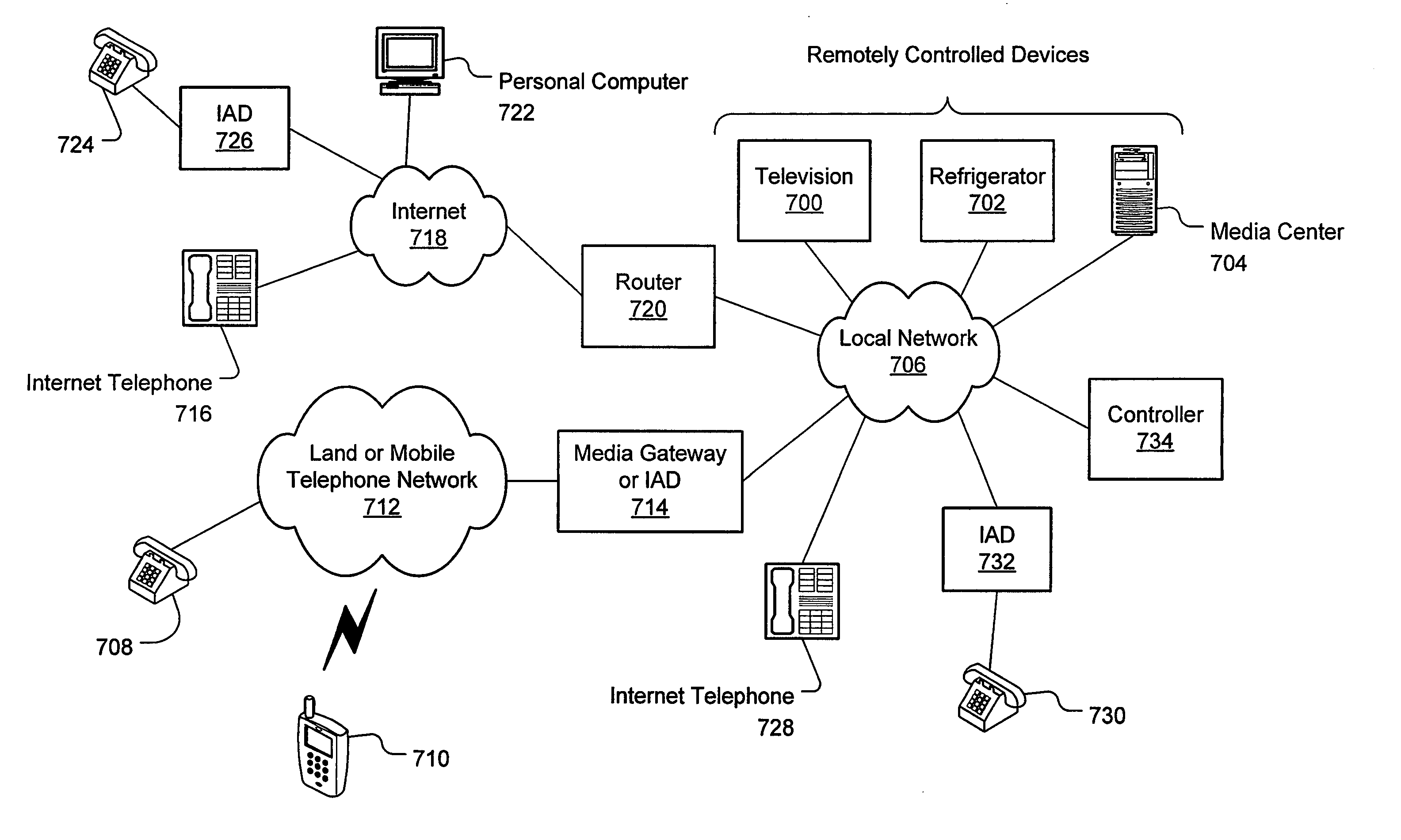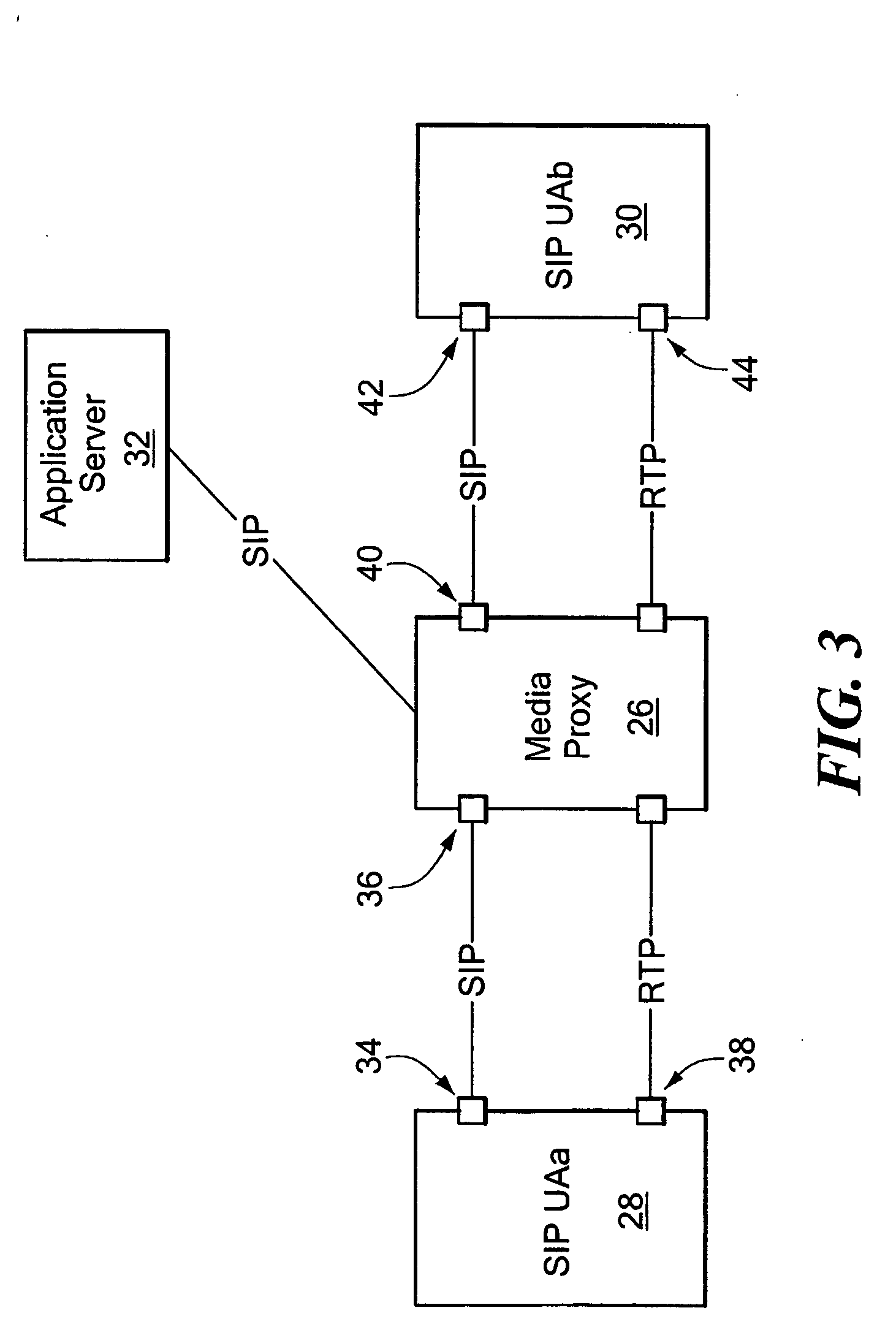Remote control of device by telephone or other communication devices
a technology of remote control and communication device, which is applied in the field of remote control of devices, can solve problems such as wasting processing and communication resources during operation, modality problems, and complicating the design of applications
- Summary
- Abstract
- Description
- Claims
- Application Information
AI Technical Summary
Benefits of technology
Problems solved by technology
Method used
Image
Examples
example 1
Single Regular Expression Request
[0049] The message in Example 1 is a request registering a set of patterns, of which there is only a single regular expression, that of the three stars (“***”).
[0050] A requesting application can also register for multiple patterns. For example, the requesting application could look for any of a set of patterns “***”, “*1”, “*61”, and “*62”, as shown in Example 2.
xmlns:xsi=“http: / / www.w3.org / 2001 / XMLSchema-instance” xsi:schemaLocation=“urn:ietf:params:xml:ns:kpml kpml.xsd” version=“1.0”> *** *1 *61 *62
example 2
Multiple Regular Expressions Request
[0051] There are different techniques that can be used to determine what pattern matches a given key press string, including for example longest match, shortest match, or most specific match. The matching algorithm to use can be specified in the KPML message. Although in many cases the longest match will be preferable, this technique has the problem that the system will always wait for the next digit, even if the best match has occurred. That is, all key press collection events end with a timeout.
[0052] To improve the user experience by having fast reporting of a match, while maintaining the longest match property, the system uses a set of special timers and the specification of an Enter Key Sequence. The timers are the critical timer, the inter-digit timer, and the extra digit timer. The critical timer is the time to wait for another digit if the collected digits can match a pattern. The extra timer is the time to wait after the longest match h...
example 3
Long Octothorpe Request
[0056] Some applications care to continuously monitor the stream for a particular pattern, while other applications look for only a single occurrence of a particular pattern, at which time the application is finished monitoring the end point device or may register a different set of patterns. The first type of request is referred to as a “persistent” request, while the second type is termed a “one-shot” request. The system provides for the requesting application to specify the nature (persistent or one-shot) of the request.
[0057] It is advantageous to refrain from notifying applications of key presses that are not of interest. However, it is possible that a human user may press spurious keys or accidentally press an incorrect key. Applications need to perform error recovery in this situation. The disclosed system addresses this problem by starting an inter-digit timer upon detection of the first key that matches the first character of any regular expression ...
PUM
 Login to View More
Login to View More Abstract
Description
Claims
Application Information
 Login to View More
Login to View More - R&D
- Intellectual Property
- Life Sciences
- Materials
- Tech Scout
- Unparalleled Data Quality
- Higher Quality Content
- 60% Fewer Hallucinations
Browse by: Latest US Patents, China's latest patents, Technical Efficacy Thesaurus, Application Domain, Technology Topic, Popular Technical Reports.
© 2025 PatSnap. All rights reserved.Legal|Privacy policy|Modern Slavery Act Transparency Statement|Sitemap|About US| Contact US: help@patsnap.com



